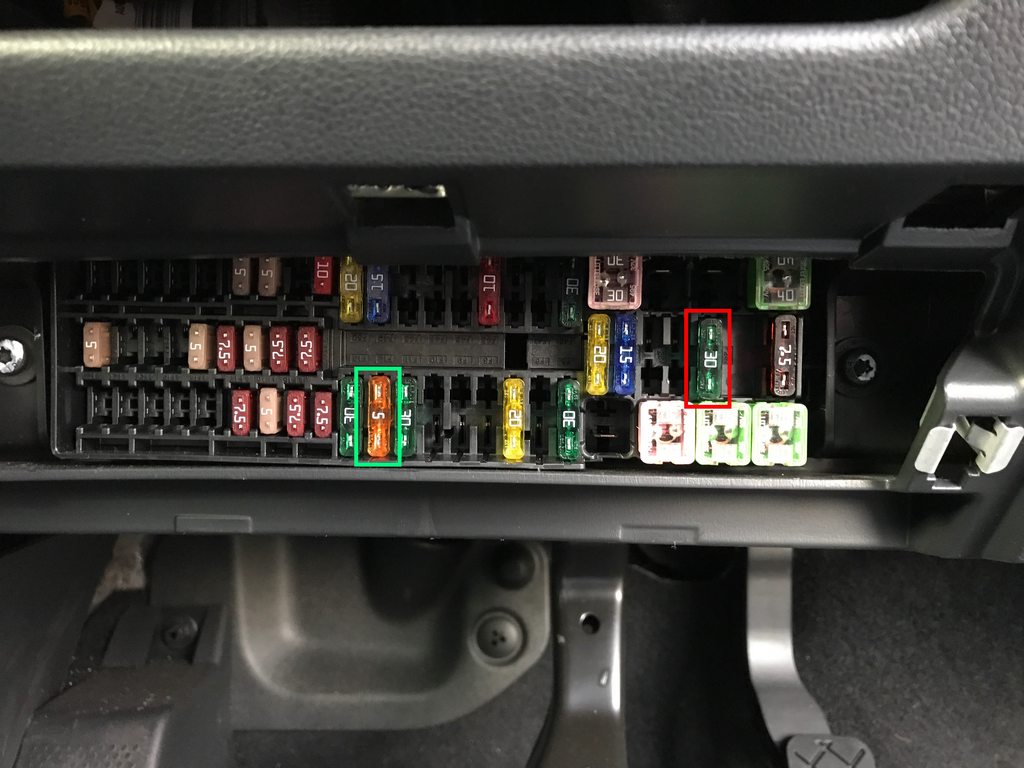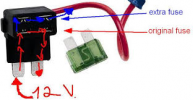Tank Montana
New Member
- Joined
- Jul 17, 2017
- Messages
- 3
- Reaction score
- 0
- Country
- United Kingdom
Hi folks,
So as the title suggests, I'm looking to understand what is the max load when tapping a fuse, either of the fuse slot itself, or the add-a-fuse.
To give context, my plan is to tap an existing fuse in my car which is 30 amps using an add-a-fuse, adding in a 3 amp fuse for my Thinkware F770, for the "ACC" line. My main question is if this too much draw for one port or is this okay? The fuse itself is for the following things, which makes me think it possibly is not suitable:
I've literally checked all other options in my fuse box and any other options are either always powered, obstructed by the frame/other fuses (when making sure hot side is on correct side) or are for important things. If this isn't doable I'll have to re-think the options.
Below shows the 30 amp fuse (red outline) I plan to tap, plus the 5 amp (green outline) I'm tapping for "battery" power, also with a 3 amp fuse.

If this process has taught me anything, it's that I'm terrible at electronics so any guidance is much appreciated.
Thanks,
TM
So as the title suggests, I'm looking to understand what is the max load when tapping a fuse, either of the fuse slot itself, or the add-a-fuse.
To give context, my plan is to tap an existing fuse in my car which is 30 amps using an add-a-fuse, adding in a 3 amp fuse for my Thinkware F770, for the "ACC" line. My main question is if this too much draw for one port or is this okay? The fuse itself is for the following things, which makes me think it possibly is not suitable:
- Fresh air blower control unit -J126-
- Air conditioning system control unit -J301-
- Fresh air blower isolation relay -J487-
- Heater control unit -J65-
I've literally checked all other options in my fuse box and any other options are either always powered, obstructed by the frame/other fuses (when making sure hot side is on correct side) or are for important things. If this isn't doable I'll have to re-think the options.
Below shows the 30 amp fuse (red outline) I plan to tap, plus the 5 amp (green outline) I'm tapping for "battery" power, also with a 3 amp fuse.

If this process has taught me anything, it's that I'm terrible at electronics so any guidance is much appreciated.
Thanks,
TM

